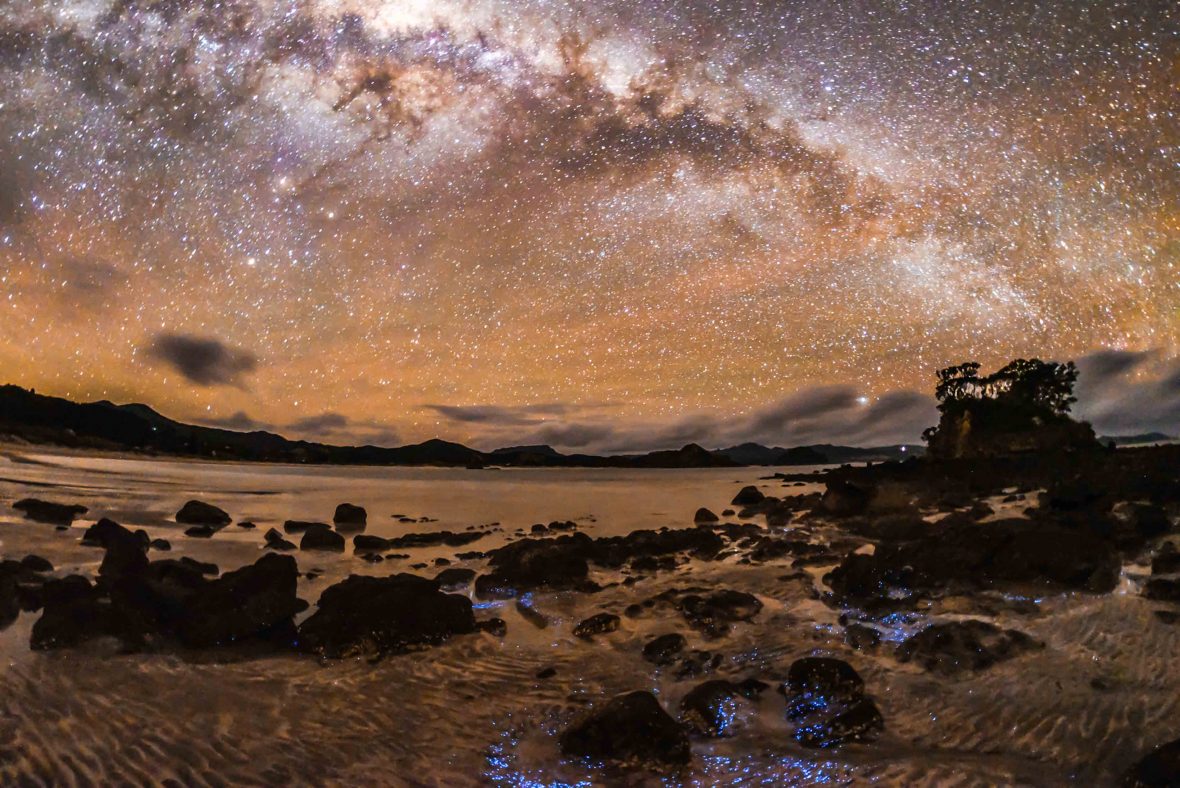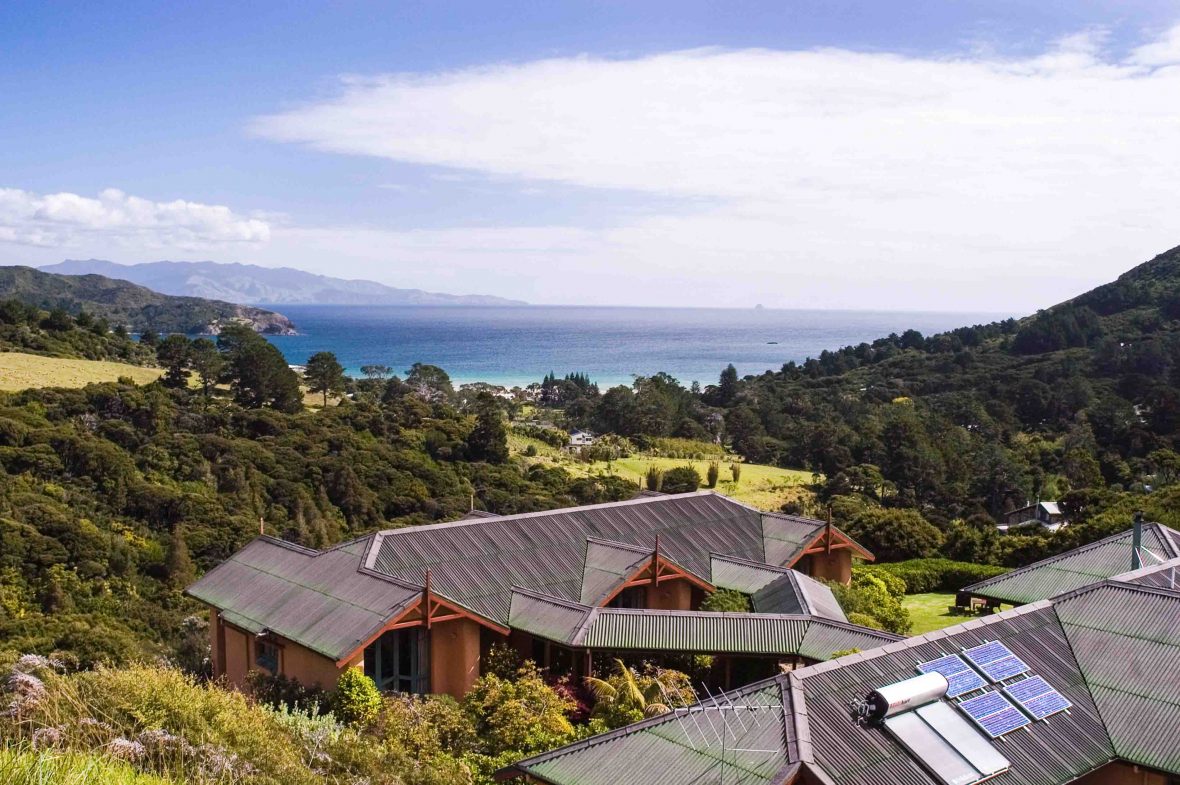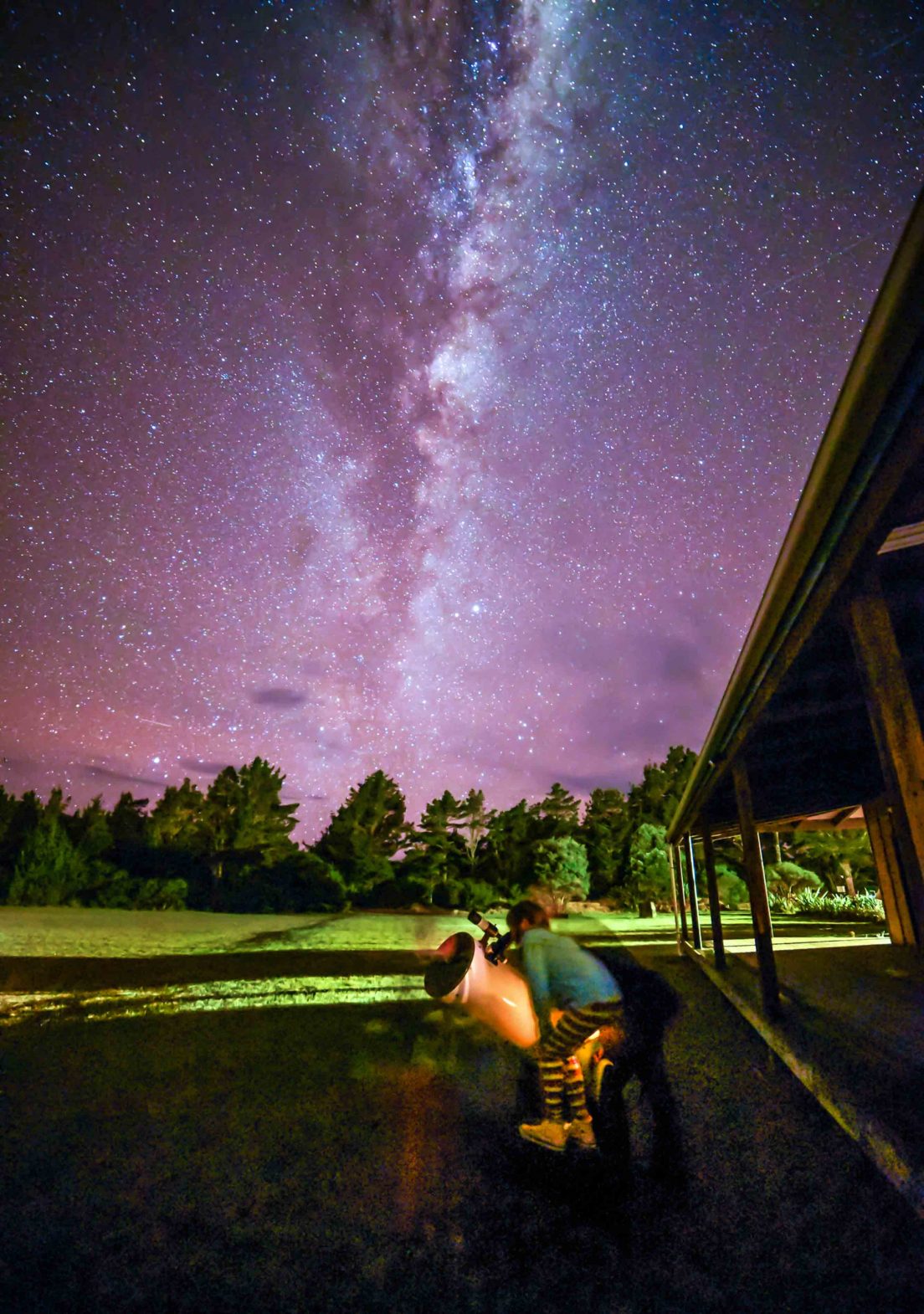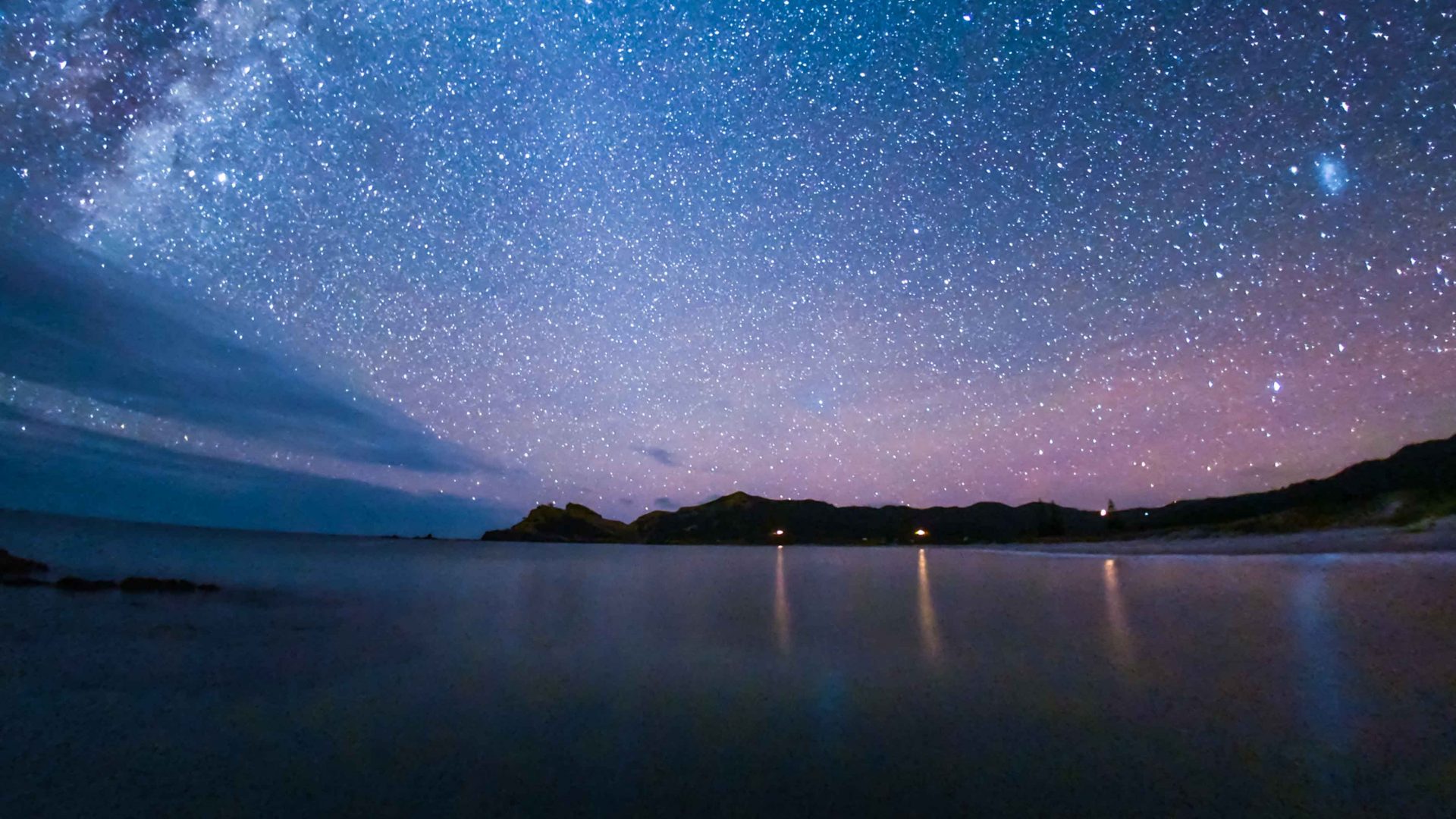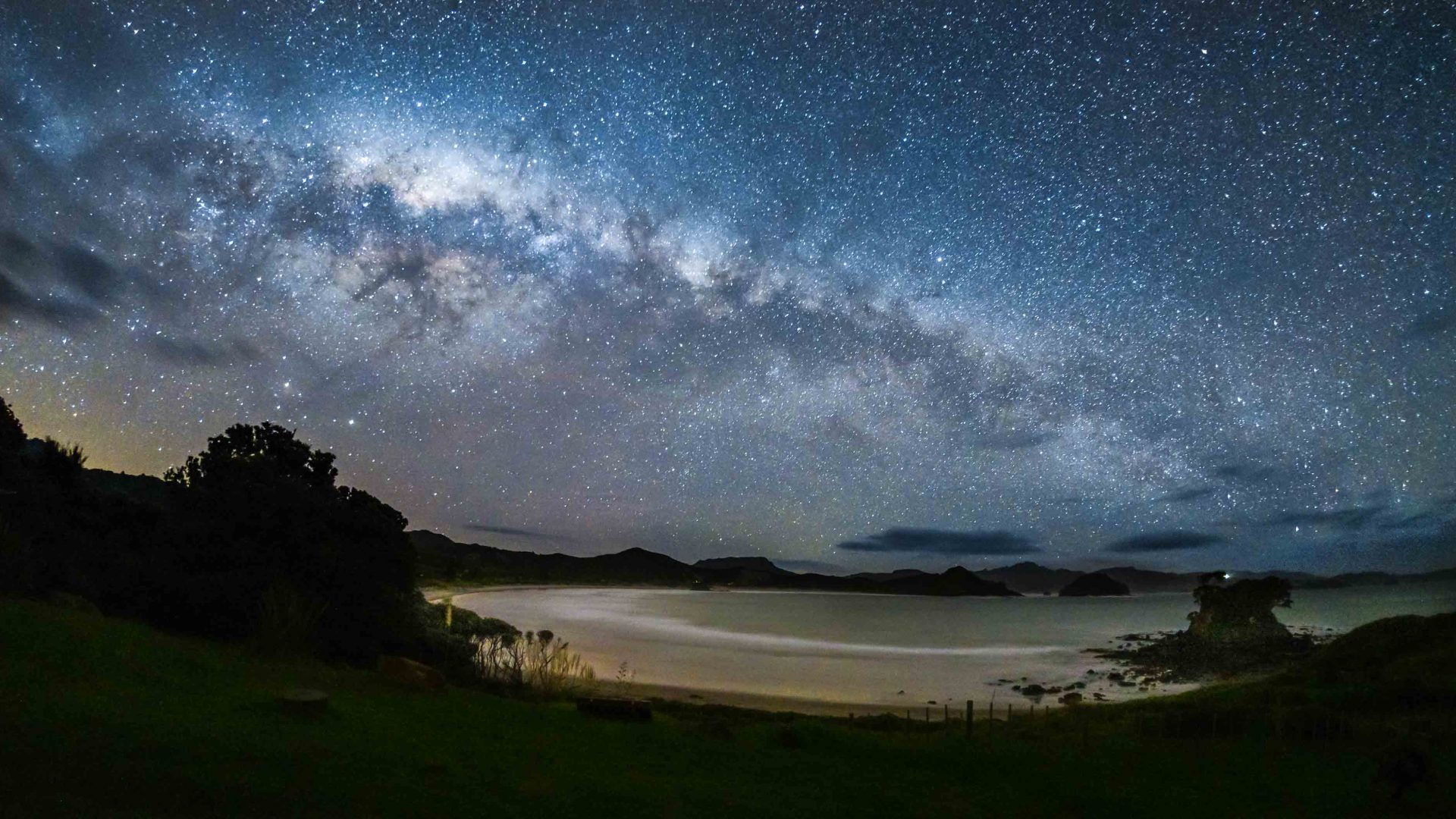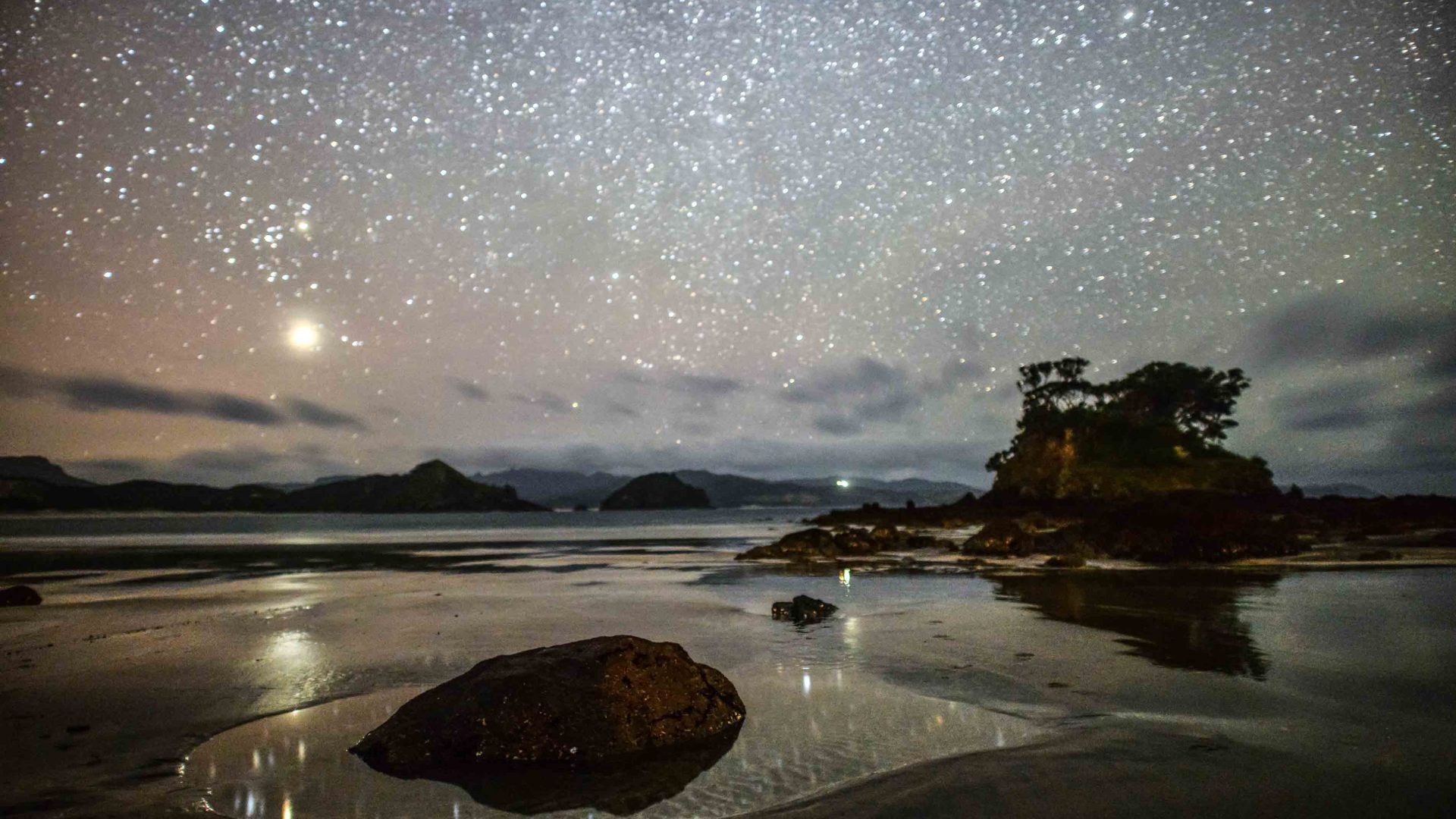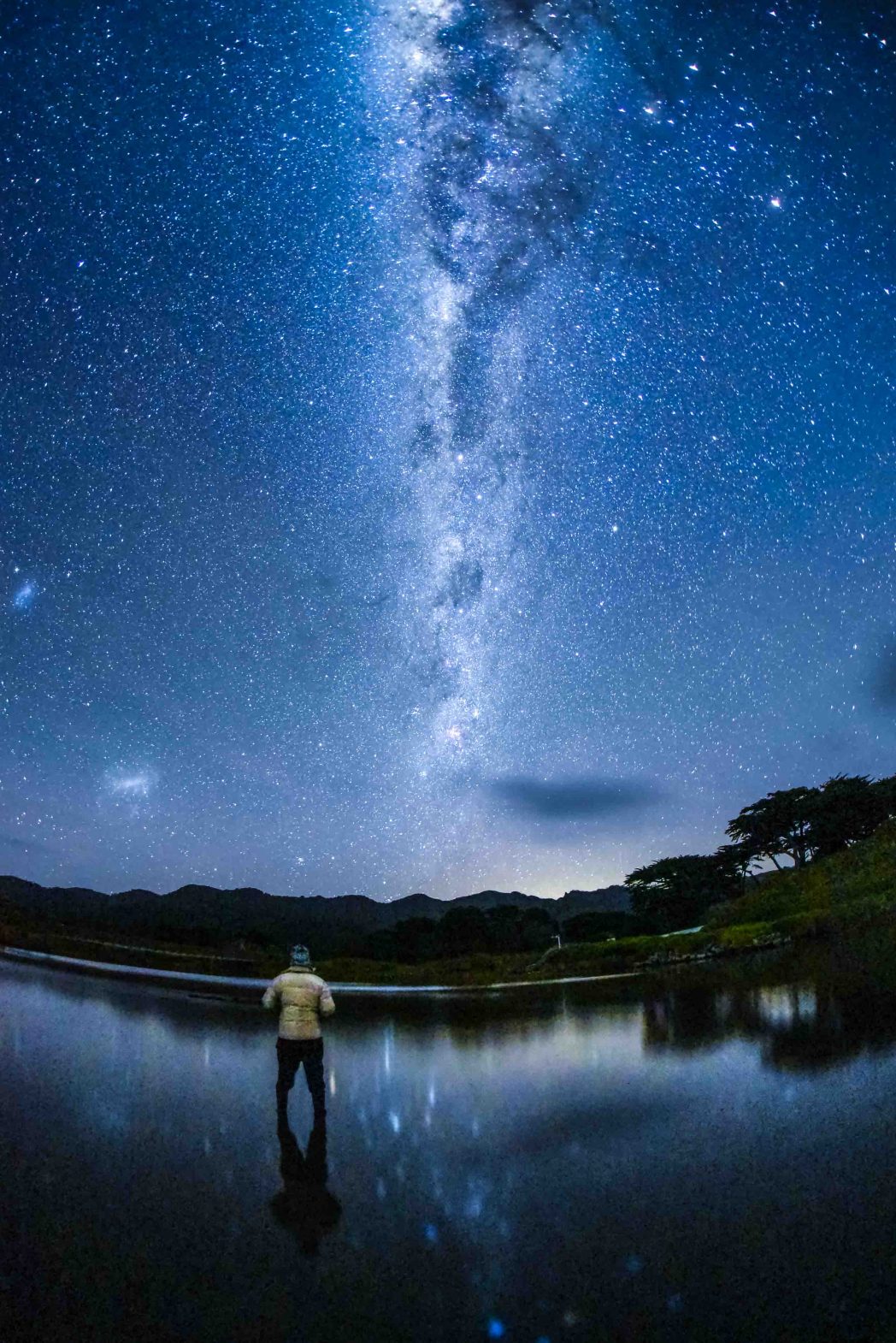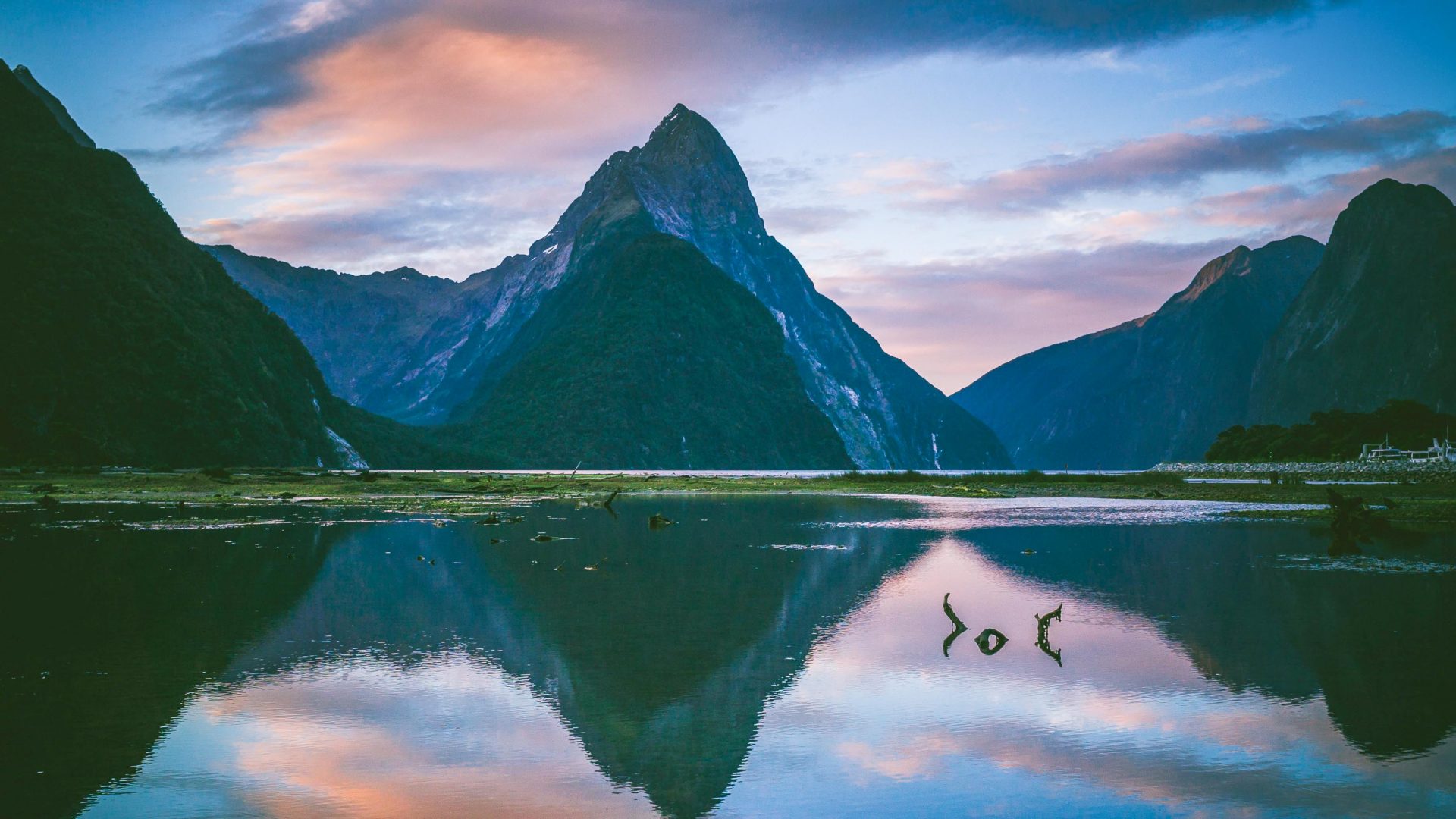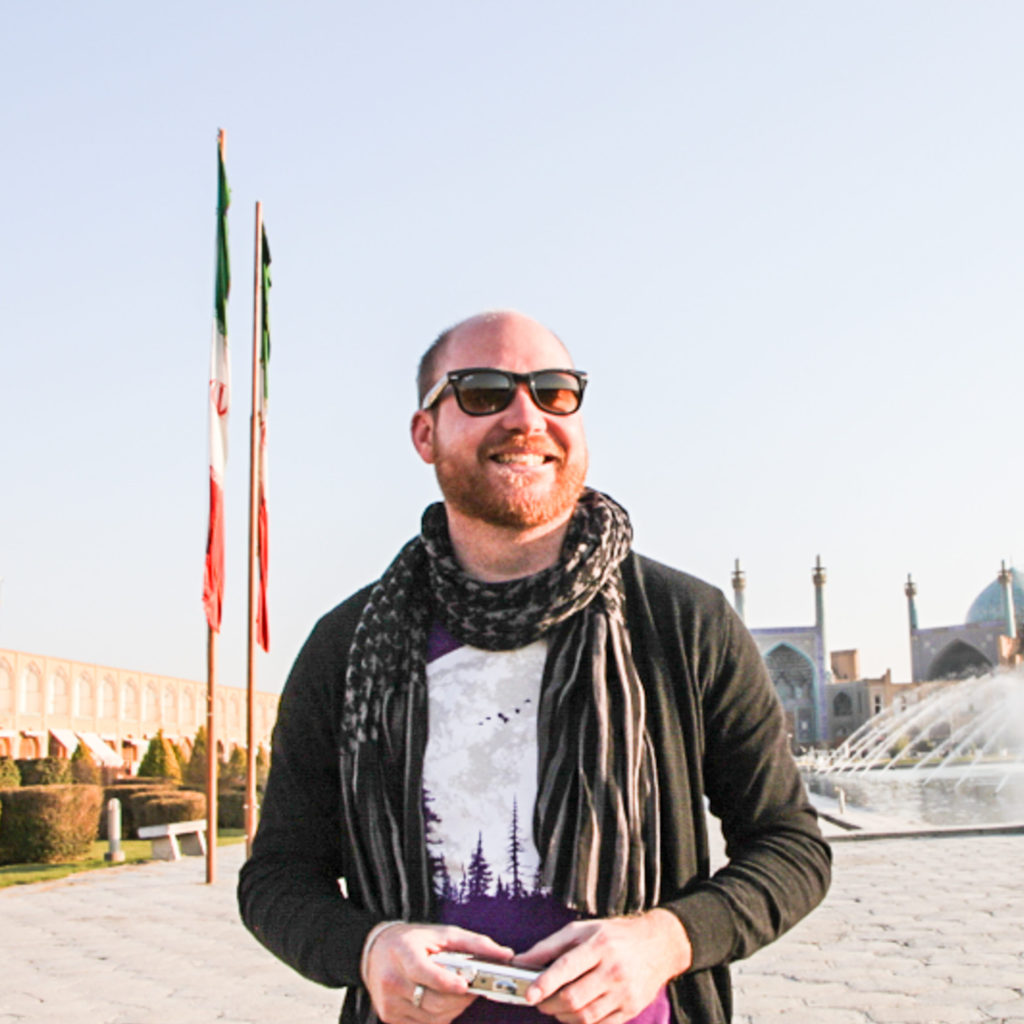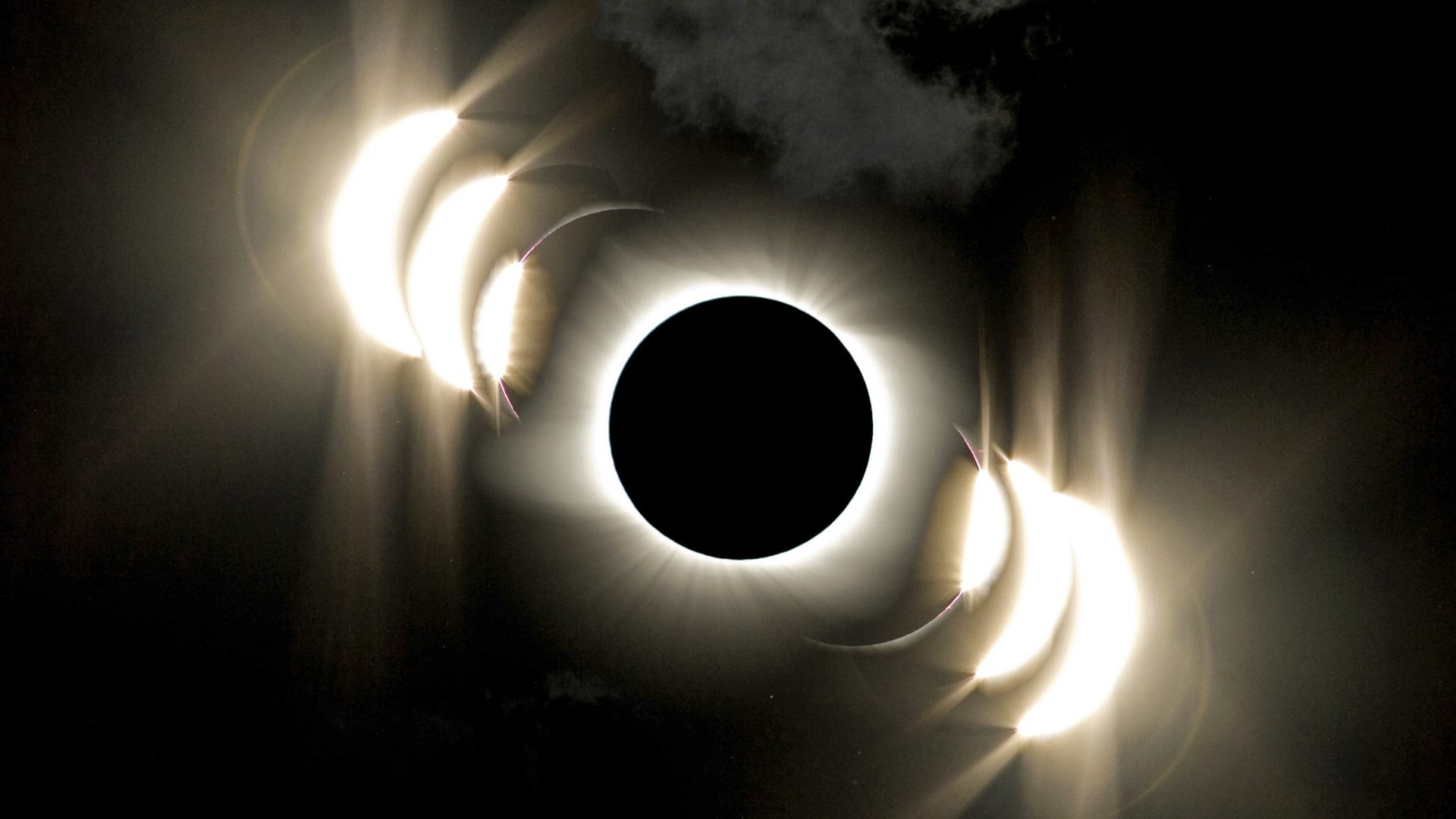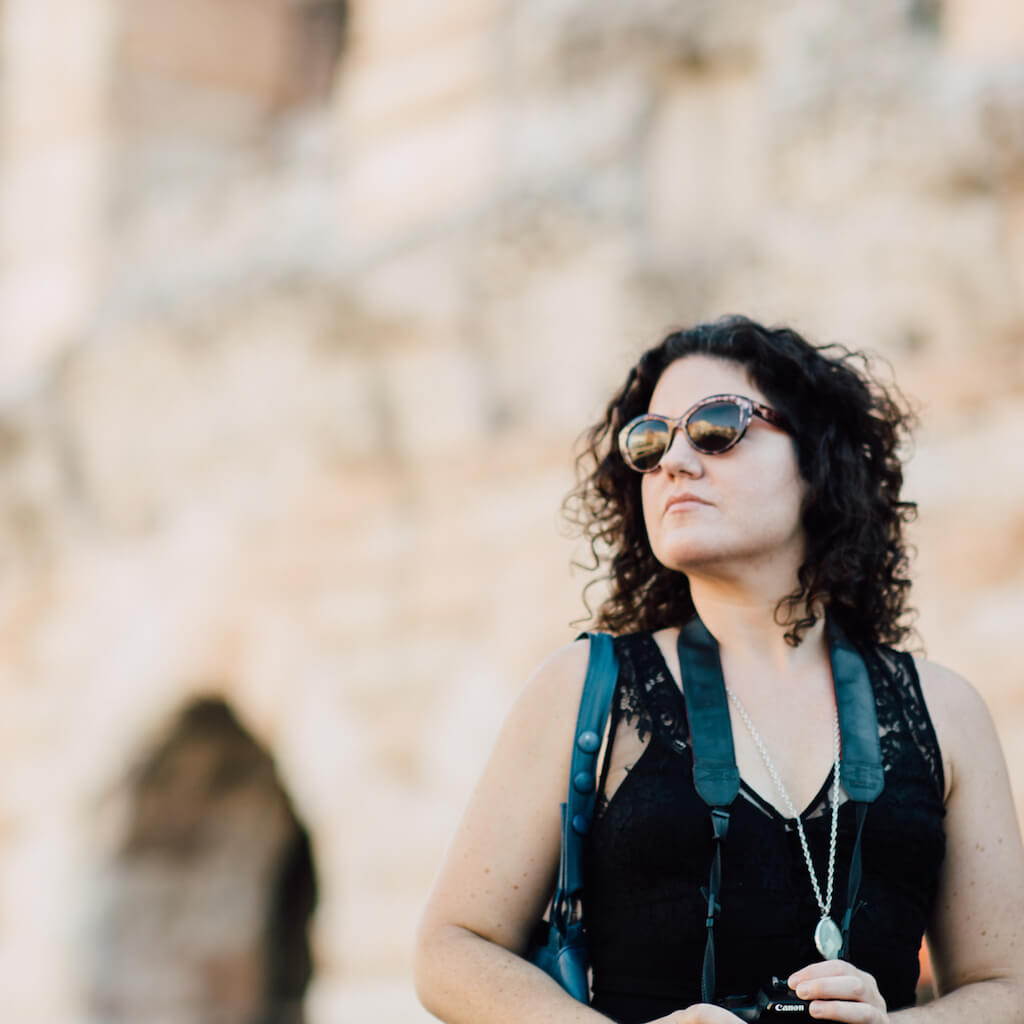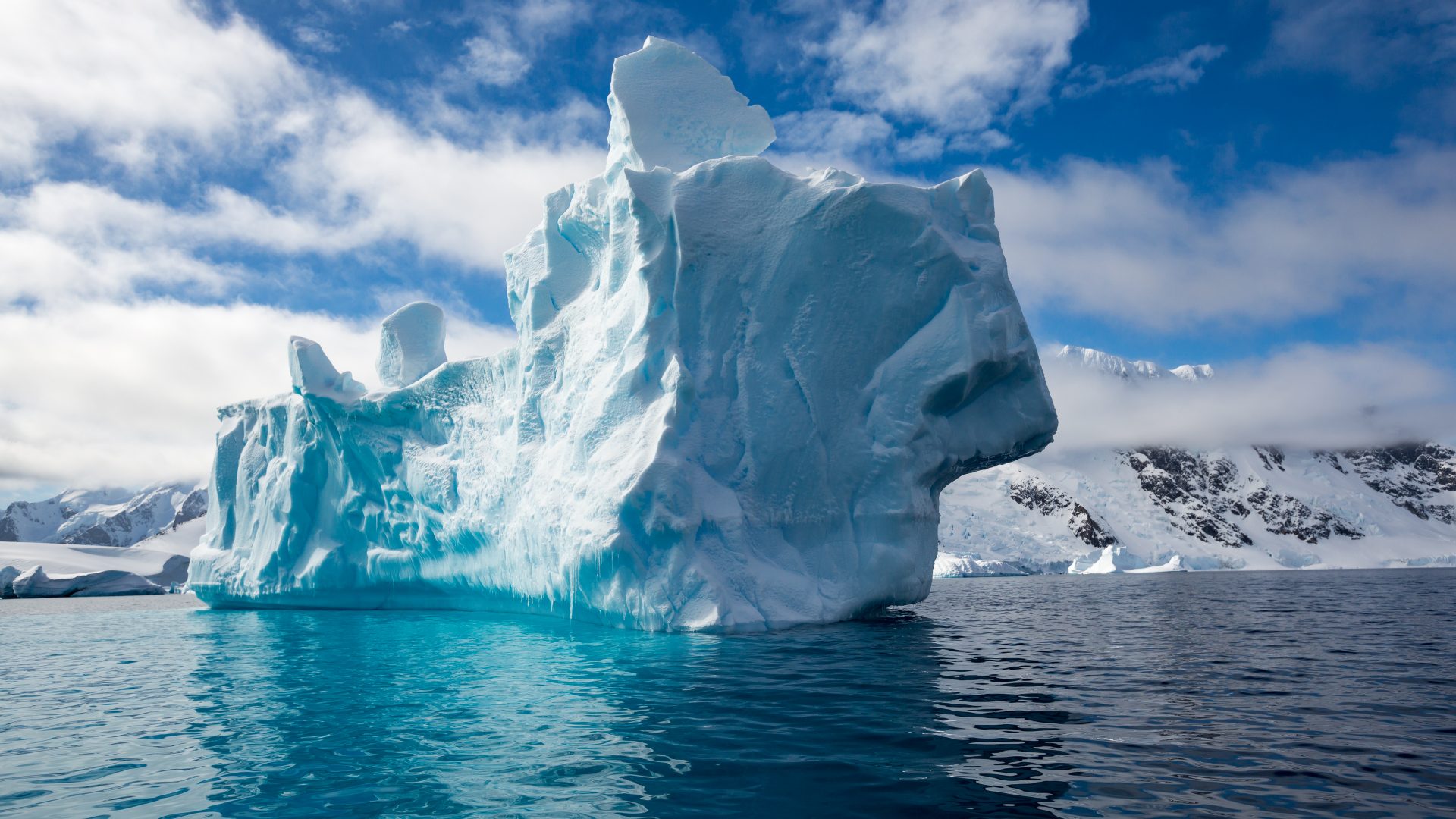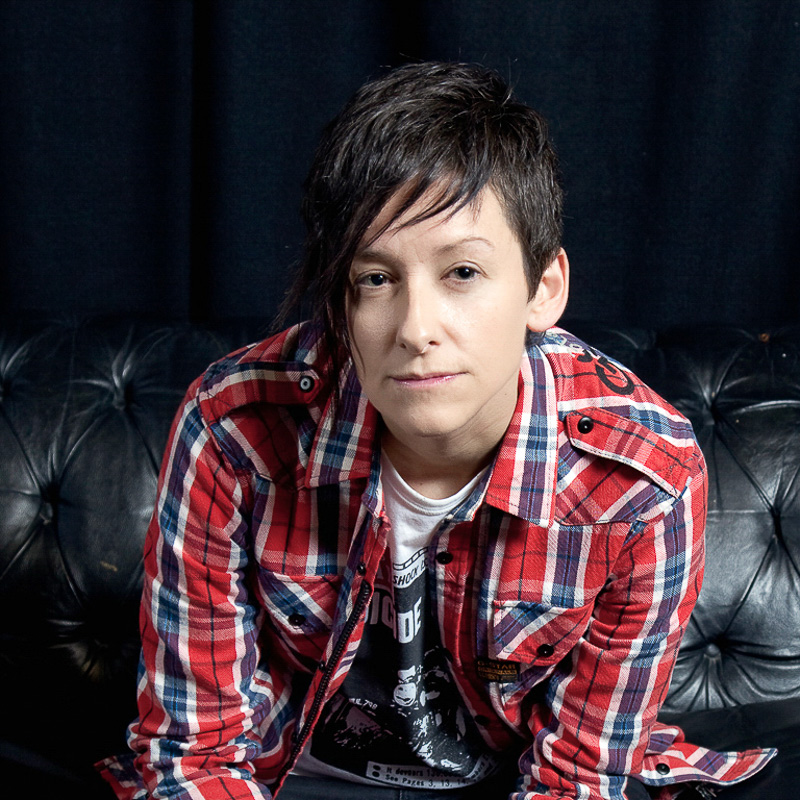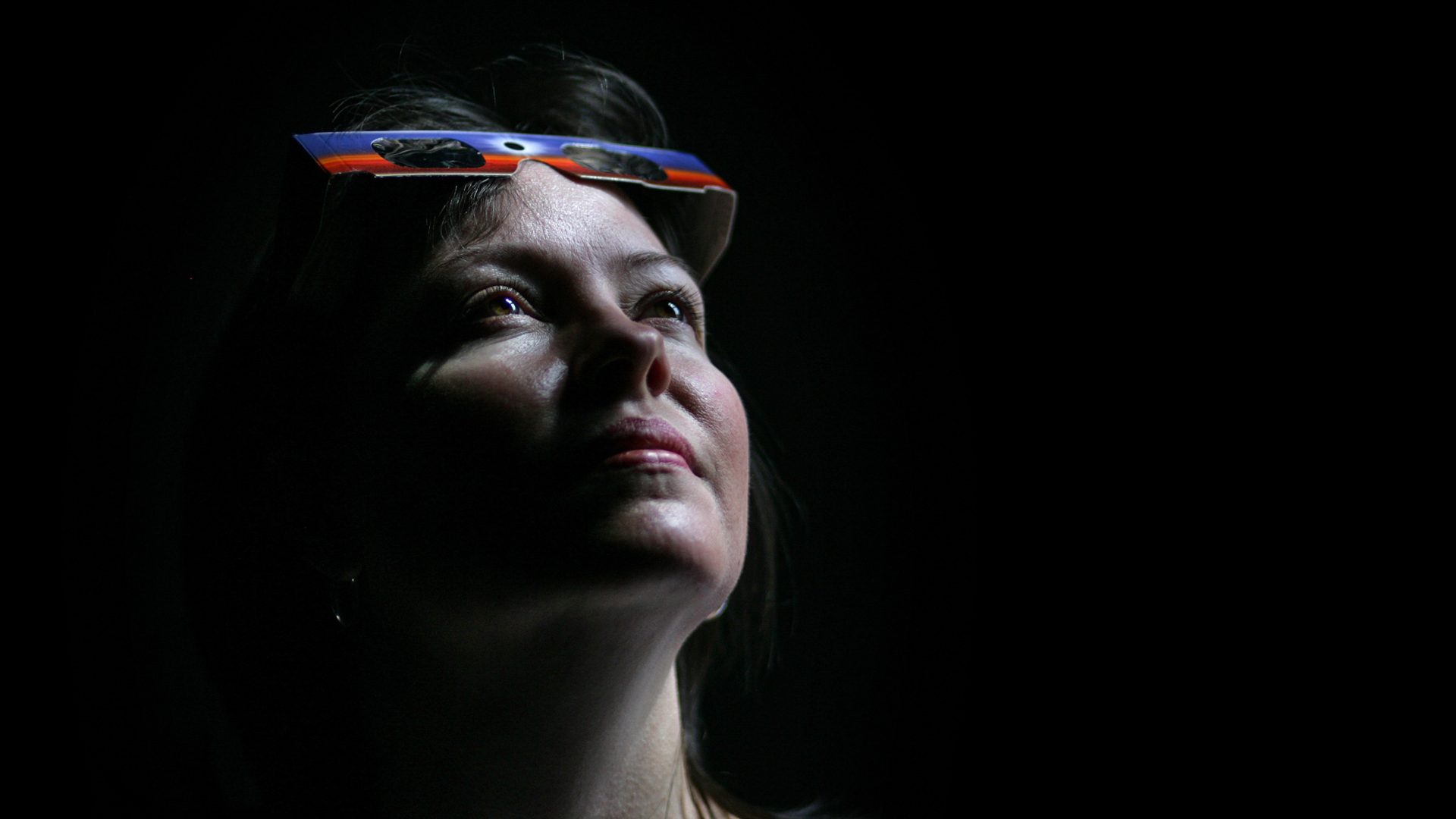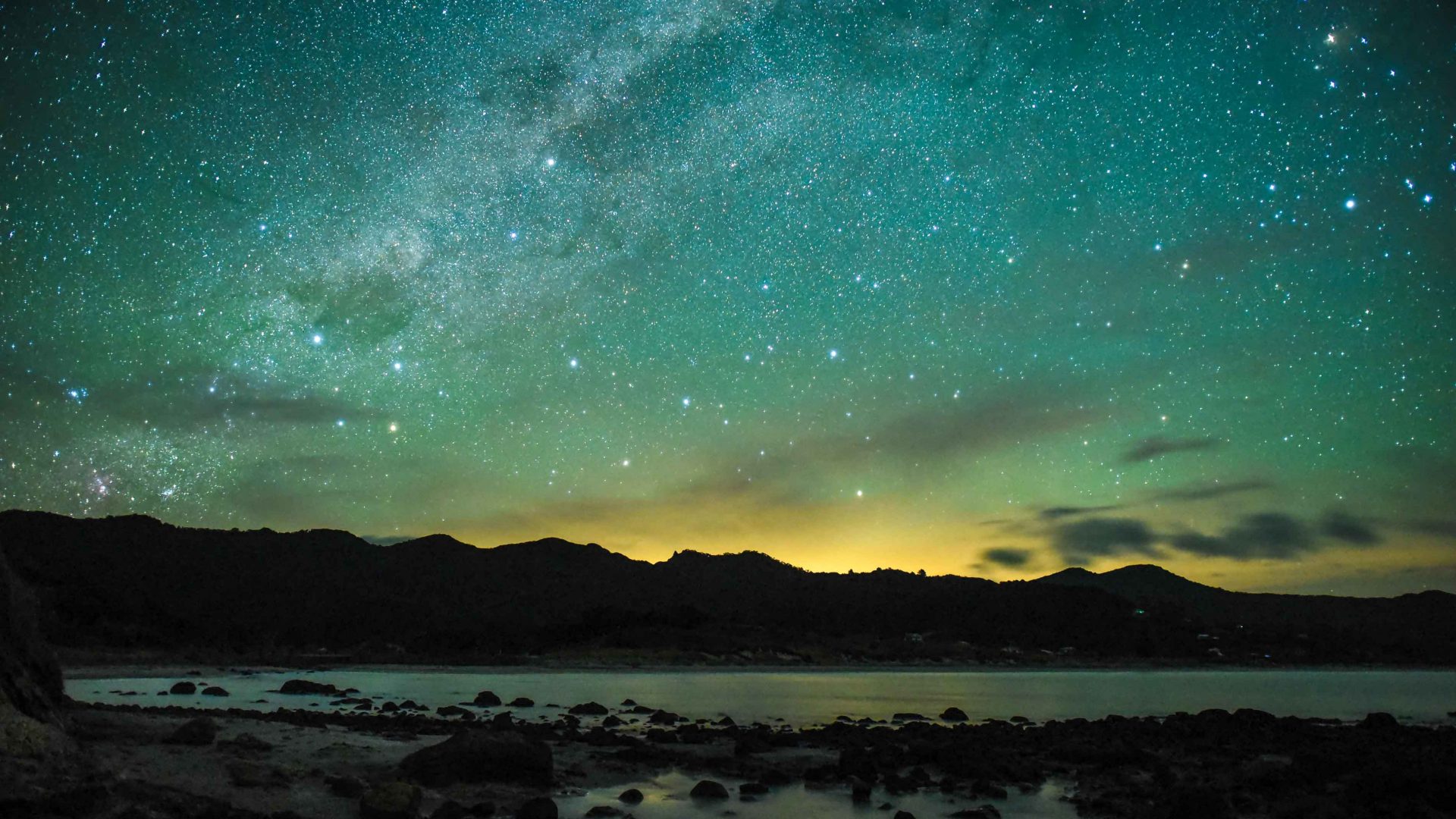
The stars over New Zealand’s Great Barrier island are 10 times brighter than those over Europe. Emma Thomson turns her gaze upwards on the world’s first Dark Sky Sanctuary island.
“It’s estimated that in Europe you can only see 500 stars with the naked eye, but out here you can see 5,000,” our local stargazing guide Hilde Hoven tells us. ‘Here’ is Great Barrier Island—New Zealand’s sixth-largest, a 30-minute flight northeast of Auckland—and in August of this year, it was designated the world’s first ‘Dark Sky Sanctuary island.’ There are only two other Dark Sky Sanctuaries in the world—the Cosmic Campground in the US state of New Mexico and Chile’s government observatory at Gabriela Mistral—but Great Barrier is the first island to gain that same status.
Until three months ago, Aucklanders escaped here on weekends to indulge in bush walks, wildlife, and white-sand beaches. But now something altogether brighter has taken the spotlight.

